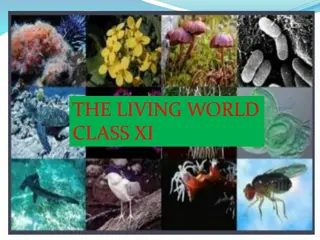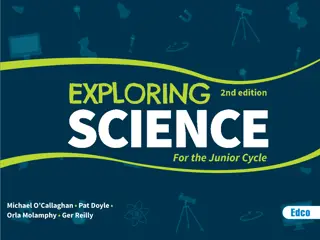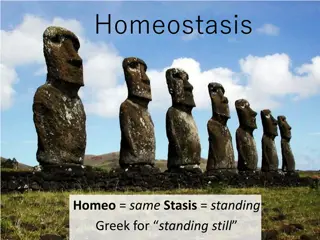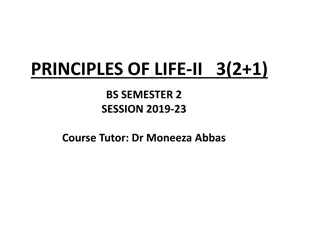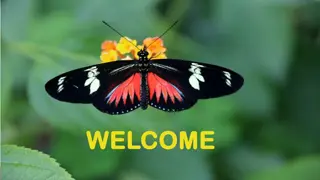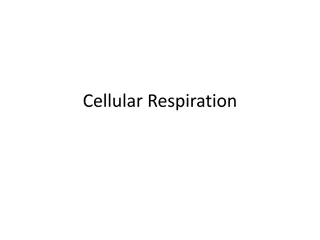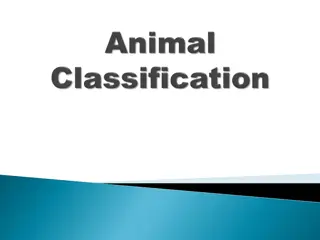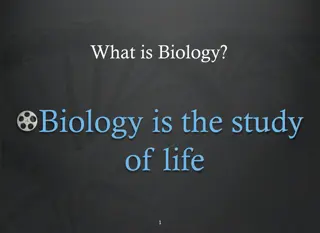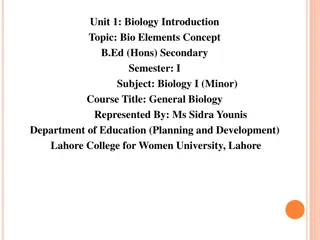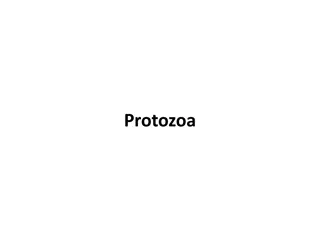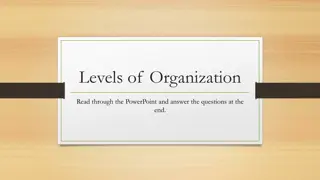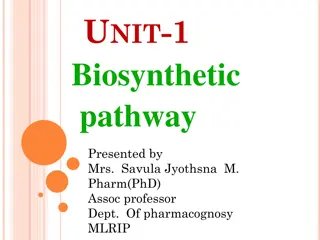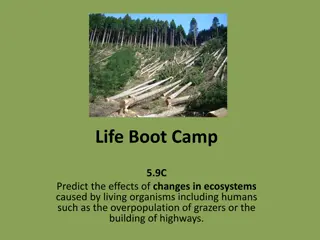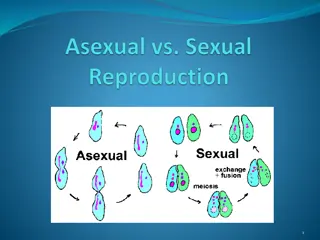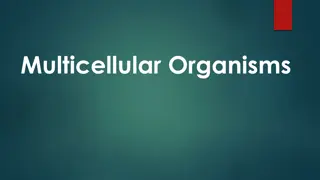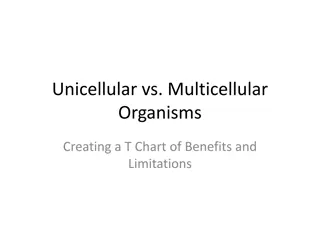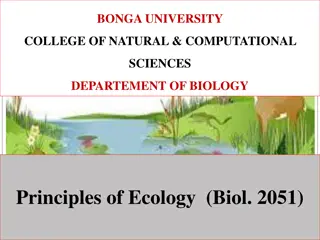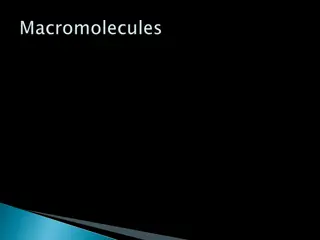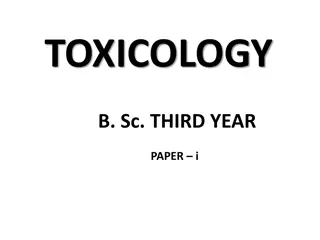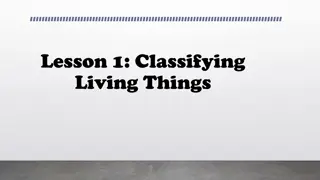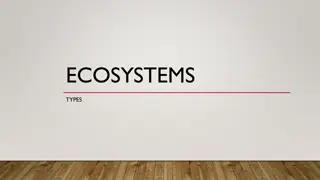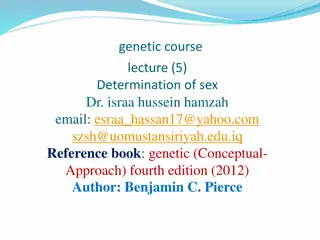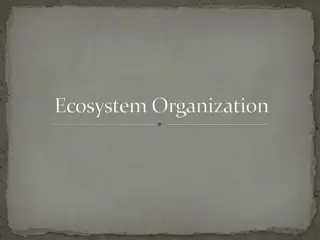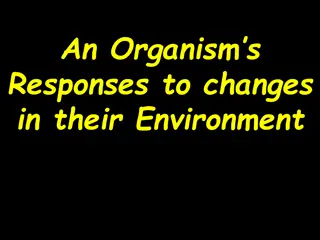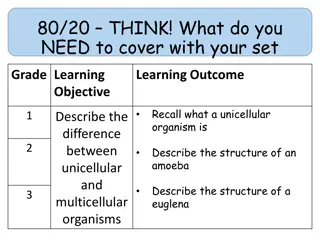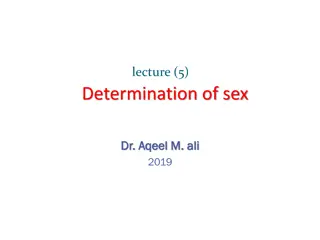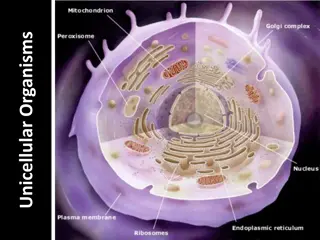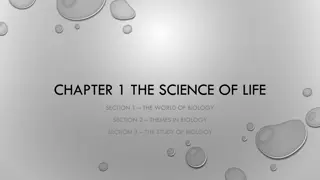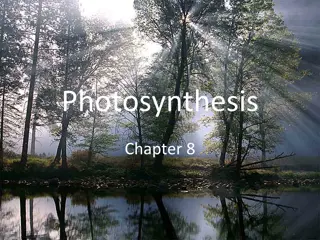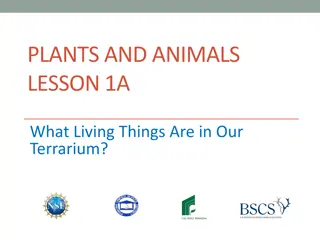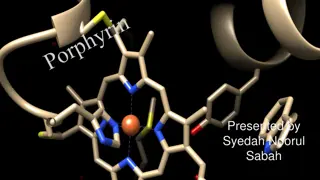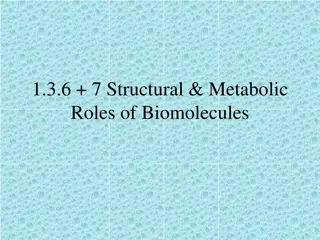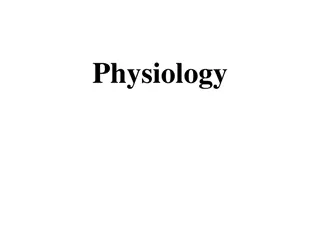Understanding the Characteristics of Living Organisms
This content covers the basic principles and characteristics of life, including organization, response to stimuli, homeostasis, metabolism, growth and development, reproduction, and evolution. It also explains the levels of organization in living organisms, the aspects of cell theory, and why viruses are not considered living entities. The criteria for defining living things are explored, emphasizing their ability to reproduce, grow, respond to stimuli, use energy, and evolve over time.
Download Presentation

Please find below an Image/Link to download the presentation.
The content on the website is provided AS IS for your information and personal use only. It may not be sold, licensed, or shared on other websites without obtaining consent from the author. Download presentation by click this link. If you encounter any issues during the download, it is possible that the publisher has removed the file from their server.
E N D
Presentation Transcript
Characteristics of Life Characteristics of Life 1. Organization- all organisms are organized into cells, compartments, organelles 2. Response to stimuli - respond to touch, excess heat, internal or external factors 3. Homeostasis- maintain stable internal conditions (heat, O2 levels, pH) 4. Metabolism- all chemical reactions that take place (mainly making or breaking down food)
Levels of Organization Levels of Organization Cells- Smallest unit of life that can perform all functions Tissues group of cells with similar function (muscle tissue, nervous tissue, epithelial) Organs- Groups of tissues with specialized jobs (Liver, brain, heart) Organ systems- Groups of organs with a specific function (Cardiovascular, nervous, digestive) Organism (multicellular)- Many structures working together to maintain homeostasis
Characteristics of Life Characteristics of Life 5. Growth & development- all organisms grow (cell division = increase in # of cells) and develop (become an adult through differentiation) 6. Reproduction (either sexual or asexual) 7. Change over time (evolve for survival)
Viruses are NOT considered living!!! Viruses are NOT considered living!!! Cannot reproduce or respond to stimuli No metabolism No growth
Cell theory states that A. All living things are composed of cells. B. New cells are produced by existing cells C. Cells are the basic unit of structure and function in living things D. All of these answers are correct
There are many criteria that are used to define living things. Living things reproduce, grow, and develop. They respond to stimuli, use materials and energy, and evolve and adapt over time to their environment. What is another criteria used to define living things? A. All living things are intelligent B. All living things are able to move C. All living things are made of cells D. All living things are complex
This virus consists of a single strand of DNA enclosed in a protein capsule. Is this virus considered a living organism? A.No; living organisms must have two characteristics of life, and the T4 bacteriophage only has one. B.Yes; since the virus contains DNA, it is a living organism. C.No; viruses are not considered to be living organisms. D.Yes; since the virus contains protein, it is a living organism.
DNA RNA (copy of DNA) 1 strand Sugar = ribose Base = Uracil (U) Helps to create proteins Can leave nucleus Both - Made of nucleotides (monomer) Sugar, phosphate, Nitrogenous base 2 strands Sugar= deoxyribose Base = Thymine (T) Instructions to make proteins Stays in nucleus -Phosphate group - Bases = Adenine, Guanine and Cytosine
Base Pairing Rules for DNA DNA A T C G Base Pairing Rules for DNA RNA A U C G T A DNA: TAG CAA TTC GAA DNA: DNA: TAG CAA TTC GAA mRNA:
DNA Replication DNA Replication (copy DNA) (copy DNA) Final Product: 2 identical copies of DNA with 1 new and 1 old strand (semi-conservative) Why? Need to double DNA for Cell Division When? During S-Phase of Interphase Where: In Nucleus Enzymes Used: 1. Helicase- unzips DNA 2. DNA Polymerase- lays down nucleotides to create new DNA strand
A parent DNA molecule replicates, resulting in two daughter DNA molecules. Which of the following is true? A. Each daughter molecule contains two new strands of DNA. B. Each daughter molecule contains two DNA strands from the parent molecule. C. Each daughter molecule contains four total strands of DNA. D. Each daughter molecule contains one DNA strand from the parent molecule.
The DNA sequences that make up the genetic code of an organism determine which traits the organism will exhibit. How are the instructions coded by DNA translated into an organism's physical traits? A.Instructions coded by DNA sequences are translated into proteins which express an organism's physical traits. B.Instructions coded by DNA sequences are translated into nucleotides which express an organism's physical traits. C.DNA sequences both code genetic instructions within an organism and express an organism's physical traits. D.DNA sequences that code for genetic instructions attach to phosphate groups that express an organism's physical traits.
3 TYPES OF RNA 3 TYPES OF RNA 1. mRNA = copy of DNA made during transcription 2. tRNA = Carries amino acids to ribosome during translation to make a protein 3. rRNA = Makes up ribosomes
Protein Synthesis Protein Synthesis (making of proteins) (making of proteins) ** ALL ORGANISMS UNDERGO PROTEIN SYNTHESIS AND USE INSTRUCTIONS FROM THE BASE PAIRING CODE IN DNA 2 Steps: Transcription & Translation Central Dogma: DNA RNA Protein
1. Transcription Location: Nucleus (cytoplasm in prokaryotes) Purpose: DNA mRNA Make a mRNA copy of DNA instructions to allow the instructions to leave the nucleus How?: RNA Polymerase attaches to DNA, reads DNA and creates matching mRNA strand sent to ribosome
1. Given DNA Sequence: DNA: ATG ACC TAA 2. Given mRNA Sequence: ACU UAA GUU
Terms: Codon = every 3 bases on the mRNA Each codon codes for 1 amino acid Anti- codon = every 3 bases on the tRNA Complimentary (matches) the mRNA codon
2. Translation Location: Ribosome Purpose: mRNA Protein Make a protein from mRNA instructions How?: Ribosome reads mRNA (codon) Calls for matching tRNA (anti-codon) Amino is brought to ribosome and attached to other amino acids to create a protein
Amino Acid Chart Amino Acid Chart DNA: ACT GAC mRNA: Amino Acid:
Amino Acid Chart Amino Acid Chart DNA: TTA CAT mRNA: Amino Acid:
Amino Acid Chart Amino Acid Chart DNA: GGC ATA mRNA: Amino Acid:
Amino Acid Chart Amino Acid Chart DNA: GCT ACC mRNA: Amino Acid:
What kind of mutation will result from the mistake made during DNA replication in the nucleotide sequence above? A. nonsense mutation C. chromosomal mutation B. silent mutation D. frame shift mutation
How is the nucleus involved in the production of enzymes? A. The nucleus transcribes and releases messenger RNA signaling for the enzymes to be synthesized. B. The nucleus receives the messenger RNA and is the site where enzymes are synthesized. C. The nucleus is involved in the packaging and transportation of enzymes outside of the cell D. The nucleus translates the ribosomal RNA for the enzymes to be synthesized in mitochondria.
During a stage of protein synthesis, codons in mRNA molecules are used to specify the sequence of amino acids in polypeptide chains. What is this process called? A. Transcription B. Translation C. Codification D. Gene Expression
What is a major difference between DNA replication and DNA transcription? A. RNA molecules produced by transcription are much shorter in length than DNA molecules produced by replication. B. DNA replication involves the nitrogenous base uracil, while DNA transcription involves the nitrogenous base thymine. C. DNA transcription only occurs in multicellular organisms, while DNA replication occurs in all organisms. D. DNA replication takes place in the nucleus, while DNA transcription takes place in the cytoplasm.
Translation involves the assembling of proteins. Which of the following forms of RNA is responsible for carrying a formed amino acid to the protein assembly site during translation? A. rRNA B. RNA polymerase C. tRNA D. mRNA
DNA contains instructions for making the different molecules that a cell needs to grow and function. For example, _______ is made by _______. A. a protein; translating mRNA B. mRNA; translating DNA C. mRNA; transcribing proteins D. a protein; transcribing mRNA
Which of the following is true about DNA transcription and protein translation? A.Transcription only occurs in animal cells, whereas translation only occurs in plant cells. B.The processes of transcription and translation do not occur in prokaryotes. C.The processes of transcription and translation are similar in all living organisms. D.Transcription only occurs in plant cells, whereas translation only occurs in animal cells.
Mitosis Meiosis # of Divisions 1 2 Purpose: Asexual reproduction for growth & replacing dead cells Sexual reproduction to create gametes & genetic variation Type of Cell It Occurs In: Somatic cells Reproductive cells # of Cells Produced: 2 4 Daughter cells haploid or diploid: Diploid Haploid Relationship of Daughter Cells to Parent Cells: Parents identical to daughter Daughter cells a mix of each parent Relationship of Daughter Cells to Each Other: Daughter cells identical to each other Unique
Terms: Terms: Diploid = 2 sets of chromosomes Haploid = 1 set of chromsomes Mitosis = division of the cell s nucleus Cytokinesis = division of the cells cytoplasm Homologous chromosomes: 4 chromatids; Same size/gene pattern/shape but not identical (1 from each parent) Found only in Meiosis I Sister chromatids: 2 chromatids; Identical copies of a chromosome Found in Meiosis II & Mitosis Nondisjunction: When chromosomes fail to separate properly during meiosis
Cell Cycle A. Interphase = cell growth G1 = Growth S = DNA replicating G2 = Prepare for division B. M phase = cell division 1. Mitosis division of nucleus a)Prophase DNA condenses into chromosomes; nuclear membrane disappears; spindle fibers appear b)Metaphase Sister chromatids line up on metaphase plate c) Anaphase Sister chromatids separate to opposite ends of cell d)Telophase DNA unravels into chromatin; nuclear membrane begins to reform; spindle disappears 2. Cytokinesis division of cytoplasm
Interphase DNA replicates ** = genetic variation Meiosis II Meiosis I Prophase II DNA condenses into chromosomes; nuclear membrane disappears; spindle forms Metaphase II Sister chromatids line up at metaphase plate Anaphase II Sister chromatids separate to opposite ends of cell Telophase II Each chromatid unravels backs into chromatin; nuclear membrane reforms End Result: 4 haploid cells (gametes- sex cells) Prophase I DNA condenses into chromosomes; nuclear membrane disappears; spindle forms ** Synapsis occurs (homologous chromosomes line up to form tetrads) ** Crossing Over occurs (homologous chromosomes exchange DNA) Metaphase I **Independent assortment occurs (homologous chromosomes line up randomly on metaphase plate) Anaphase I Tetrads separate to opposite ends of cell Telophase I Each sister chromatid unravels backs into chromatin; nuclear membrane reforms End Result: 2 diploid cells
The cell cycle involves the growth, replication, and division of a eukaryotic cell. Mitosis most directly plays a role in: A. the transport of nutrients within a cell. B. the division of a cell's nucleus. C. the growth of a cell after cell division. D. the metabolic processes of a cell.
What is the name of the process that appears in the diagram below? A.Differentiation B.Meiosis C.Mitosis D.Fertilization
Which of the following statements describes Meiosis? I. Produces sex cells with a half set of genetic information II.Produces somatic cells for growth & repair III.Produces 4 genetically unique cells IV.Produces 2 identical diploid cells A.I and III only B.II and III only C.I, II, III, and IV D.II, III and IV only
Kangaroos have 12 chromosomes in their body cells. A kangaroo sex cell divides by meiosis. The daughter cells produced each have _______ chromosomes. A. 18 B. 12 C. 6 D. 3
Gametes in humans are haploid. This means that they have half the number of chromosomes as normal body cells. Sometimes, the gamete of a male and the gamete of a female combine to form a zygote that will eventually turn into a fetus. Phenotypic changes in a fetus may result A. only if a mutation occurs in both the mother's and father's cells. B. if a mutation occurs in the father's heart cells. C. if a mutation occurs in the mother's brain cells. D. if a mutation occurs in the gametes.
Which part of the apple flower produces cells by meiosis? A. style B. anther C. stigma D. filament
2.Patau syndrome can be a lethal genetic disorder in mammals, resulting from chromosomes failing to separate during meiosis. A. Identify the step during the process of meiosis when chromosomes would most likely fail to separate. B. Describe how chromosome separation in meiosis is different from chromosome separation in mitosis C. Compare the effects of a disorder caused by chromosomes failing to separate during meiosis, such as Patau syndrome, to the effects of chromosomes failing to separate during mitosis.
A. Anaphase (when chromosomes separate) B. In Meiosis Chromosomes separate twice (homologous chromosomes separate in Anaphase I and sister chromatids separate in Anaphase II) to result in 4 unique half sets of chromosomes In Mitosis- Sister chromatids separate once to result in 2 identical sets of chromosomes C. When chromosomes fail to separate during Meiosis (nondisjunction), these chromosomes changes will be passed on the offspring. When chromosomes fail to separate during Mitosis, these changes will not be passed off to offspring.
A Trichoplax is a simple multicellular animal that lives in water. This animal can reproduce asexually by simply dividing into two organisms. Describe a cellular division process that could be used by Trichoplax when it reproduces asexually. Binary fission Replicates itself and DNA, then divides into 2 identical organisms.
B. Describe one benefit and one limitation of how the Trichoplax can reproduce by simply dividing. Benefit = It can reproduce by itself and increase the population rapidly. A limitation = no genetic variation to possibly gain traits better suited for the environment
Mutation- changes in DNA which cause changes in protein shape or function = changes in traits 1. Silent = Change in DNA does not affect the codon or the protein 2. Nonsense = Change in DNA causes the codon to change from coding for an amino acid to coding for STOP 3. Frameshift = Inserting or deleting a base which changes the reading frame of view; changes multiple codons Ex: Original DNA: GAT ATA Original mRNA: CUA UAU Mutated DNA: GAC TAT A Mutated mRNA: CUG AUA U
Inheritance Patterns Inheritance Patterns 1. Complete Dominance- one allele is completely dominant over the other allele; Heterozygote displays the phenotype of the dominant allele 2. Incomplete Dominance neither allele is dominant enough to overtake the other; Heterozygote displays a blended phenotype 3. Codominance Both alleles are equally dominant; Heterozygote displays both alleles equally (usually spotted) 4. Sex-linked Found on the sex chromosomes; Sex-linked recessive more common in males (have only 1 X) (Colorblindness) 5. Multiple Alleles More than 2 alleles (Blood type)
R = Red flower r = white flower Heterozygote Phenotype (Rr) Complete Dominance Red Incomplete Dominance Pink Codominance Red & white spotted


